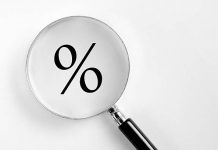Personal income rose 0.2% month-on-month in September, below the consensus forecast for 0.4%. Personal spending was up 0.4%, on par with expectations.
Prices were up 0.1% month-on-month and 2.0% year-on-year. Core prices (excluding food and energy) rose 0.2% and were also up 2.0% from a year ago.
Removing price growth, real spending was up 0.3% in September and revised up to 0.4% in August (from 0.2%). By component, real spending was led by durables (1.8%), while non-durable and services spending both rose 0.2%.
The personal saving rate edged down to 6.2% (from 6.4% in August), and is down from a recent peak of 7.4% in February.
Key Implications
Spending momentum remained strong through the end of the third quarter, leaving a solid handoff to the fourth quarter. We anticipate spending growth of around 2.5% (annualized) in Q4 – still solid but not quite the 3.9% average over the past two quarters.
Tax cuts early in the year are adding around half a percentage point to disposable income growth, and this is showing up pretty clearly in spending. In the absence of further tax cuts, this lift will diminish in 2019, setting the stage for a more staid performance over the next year.













